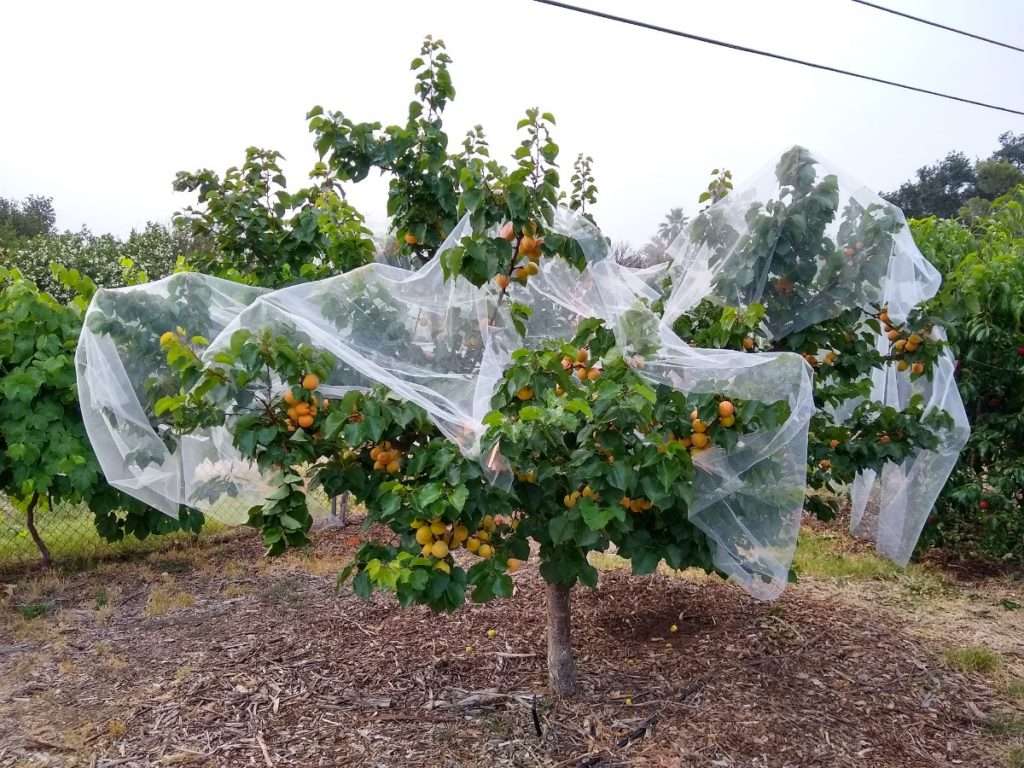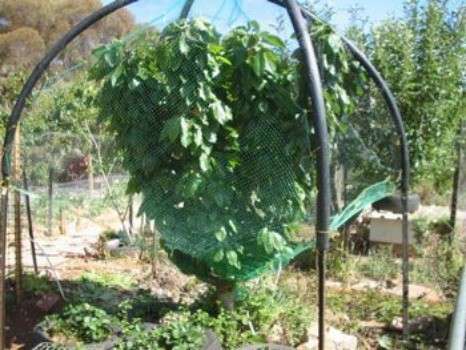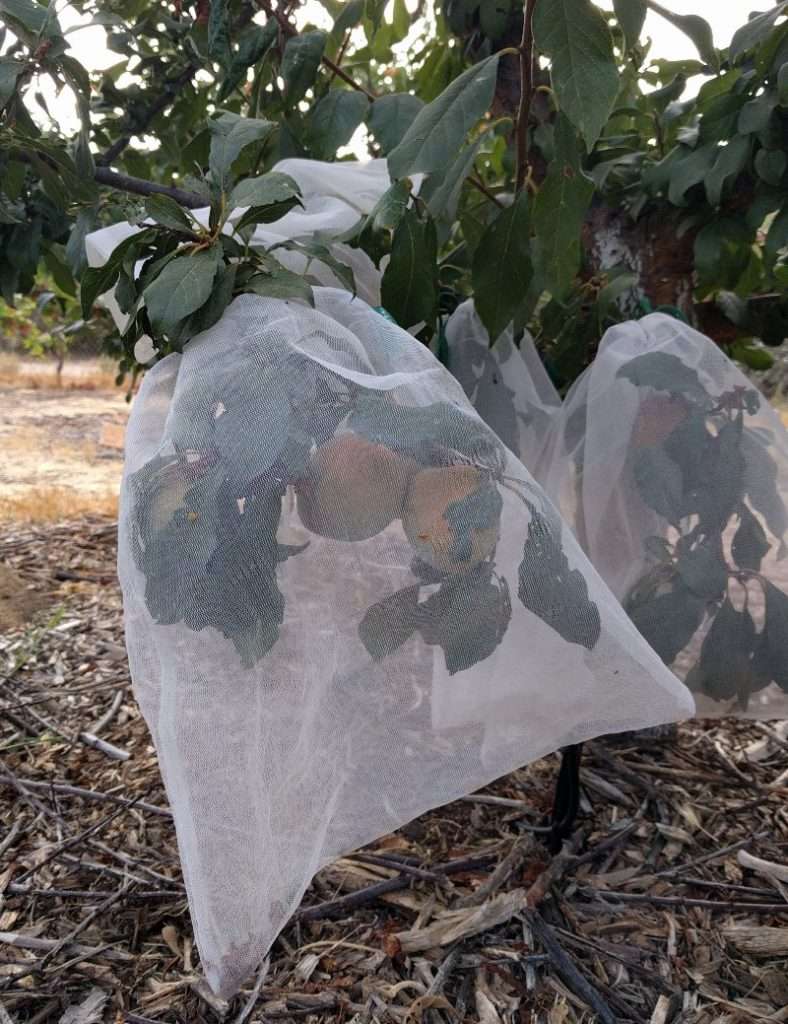If you’re a fan of cherries, you know how frustrating it can be to see birds swoop in and ruin your harvest. But fear not, because there are several methods you can use to protect your cherry trees from those pesky birds. One of the most effective methods is to provide fresh water and an alternative food source for the birds, which can decrease their interest in your cherries. Additionally, physical barriers like bird netting can keep the birds away from your trees, while bird repellents such as sprays, scarecrows, and noisemakers can also be effective deterrents. By taking these precautions and ensuring proper care for your cherry trees, you can enjoy a bountiful harvest without any feathery friends interfering.
Methods to Protect Cherry Trees from Birds
Cherries are a favorite food of many birds, which can lead to damage of the fruits. Fortunately, there are several methods that you can employ to protect your cherry trees from these feathered pests. These methods range from providing fresh water and an alternative food source to physical barriers and bird repellents. By implementing these strategies, you can safeguard your cherry trees and enjoy a bountiful harvest.

Provide Fresh Water and an Alternative Food Source
One of the easiest and recommended ways to protect cherry trees from birds is to provide them with fresh water and an alternative food source. By doing so, you can decrease their interest in cherries and divert their attention elsewhere. Birds often look for water sources during hot weather and by offering them access to fresh water, such as through birdbaths or watering stations, you can deter them from your cherry trees. Additionally, setting up alternative food sources like bird feeders with seeds or fruits can help distract birds from your cherry trees.
Use Physical Barriers like Bird Netting
Physical barriers, such as bird netting, can be highly effective in keeping birds away from your cherry trees. Bird netting is a lightweight material that is specifically designed to keep birds from accessing the fruits. It creates a barrier that prevents birds from landing on the trees and reaching the cherries. When choosing bird netting, it is important to select the right type that provides optimal protection without causing harm to the birds. Additionally, proper installation of the netting is crucial to ensure that there are no gaps or openings that birds can exploit.
Utilize Bird Repellents
Bird repellents are another method to consider for protecting your cherry trees. There are different types of bird repellents available, including sprays, scarecrows, and noisemakers. Bird repellent sprays usually contain chemicals that birds dislike, making them less likely to land on or consume the cherries. Scarecrows, on the other hand, create the illusion of a predator presence, which can deter birds from approaching the trees. Noisemakers, such as wind chimes or reflective tape, create noise or movement that can scare birds away. The effectiveness of bird repellents may vary, so it is important to experiment and find what works best for your specific situation.
Use Heavy-duty Bird Netting
While standard bird netting can be effective, for extra protection, you can opt for heavy-duty bird netting. Heavy-duty netting is made of stronger materials that are more resistant to bird attempts to tear or penetrate it. This type of netting provides added durability and longevity, making it a reliable option to safeguard your cherry trees against bird damage. When using heavy-duty bird netting, it is crucial to properly secure it to ensure that there are no gaps or loose areas that birds can exploit.

Properly Secure and Cover the Entire Tree Canopy
When utilizing bird netting, it is essential to properly secure it and cover the entire tree canopy. Birds are relentless in their efforts to access cherries, and any gaps or openings in the netting can provide them with an entry point. To prevent access, ensure that the netting is tightly secured to the base of the tree trunk and extends over the entire canopy, leaving no area exposed. This comprehensive coverage will effectively prevent birds from landing on the trees and consuming the cherries.
Hang Shiny Objects or Use Scarecrows and Owl Decoys
Creating the illusion of a predator presence can also deter birds from your cherry trees. Hanging shiny objects, such as aluminum foil strips or CDs, can create flashes of light that can scare birds away. Additionally, scarecrows and owl decoys can serve as visual deterrents, as birds perceive them as potential predators. Place these objects strategically throughout your cherry tree orchard to create an atmosphere that birds find uninviting and threatening.

Use Noisemakers and Electronic Bird Repellents
Noisemakers and electronic bird repellents can be effective in deterring birds, especially on a smaller scale. Noisemakers like wind chimes, bells, or even playing loud noises can disrupt birds and discourage them from staying in the area. Electronic bird repellents utilize ultrasonic or sonic frequencies that are unpleasant to birds. These devices can emit sounds that are inaudible to humans but are highly effective in repelling birds. However, it is important to note that noisemakers and electronic bird repellents may be less effective in larger orchards, where birds may become accustomed to the sounds over time.
Reapply Bird Repellent Sprays
If you choose to use bird repellent sprays, it is important to understand that they may need to be reapplied periodically. Bird repellent sprays contain chemicals that birds dislike, making the cherries less appealing to them. However, rain can wash away the spray, reducing its effectiveness. Therefore, you may need to reapply the bird repellent spray after rainfall to maintain its efficacy. Additionally, extreme weather conditions may require more frequent reapplication, so it is important to monitor the weather and adjust accordingly.

Proper Watering
Beyond protecting cherry trees from birds, it is important to implement proper watering practices for overall tree health. Cherry trees require a sufficient amount of water, especially during dry or hot periods. Ensuring that your cherry trees are adequately watered can help keep them healthy and less susceptible to bird damage. Consider using a drip irrigation system or watering deeply and infrequently to encourage deep root growth.
Fertilization, Pruning, and Protection from Pests and Diseases
In addition to protecting cherry trees from birds, it is crucial to prioritize their overall health and well-being. Proper fertilization is essential for providing the necessary nutrients to your cherry trees and promoting optimal growth. Regular pruning helps maintain the shape and size of the trees, allowing for proper sunlight penetration and airflow. Protecting cherry trees from pests and diseases through regular monitoring and implementing preventive measures, such as applying insecticides or fungicides when necessary, can ensure their long-term survival and productivity.
In conclusion, protecting cherry trees from birds requires a combination of methods and strategies. Providing fresh water and an alternative food source, using physical barriers like bird netting, utilizing bird repellents, and implementing proper tree care practices are all essential components of an effective bird protection plan. By employing these methods and being proactive in your approach, you can mitigate bird damage and enjoy a successful cherry harvest year after year.





